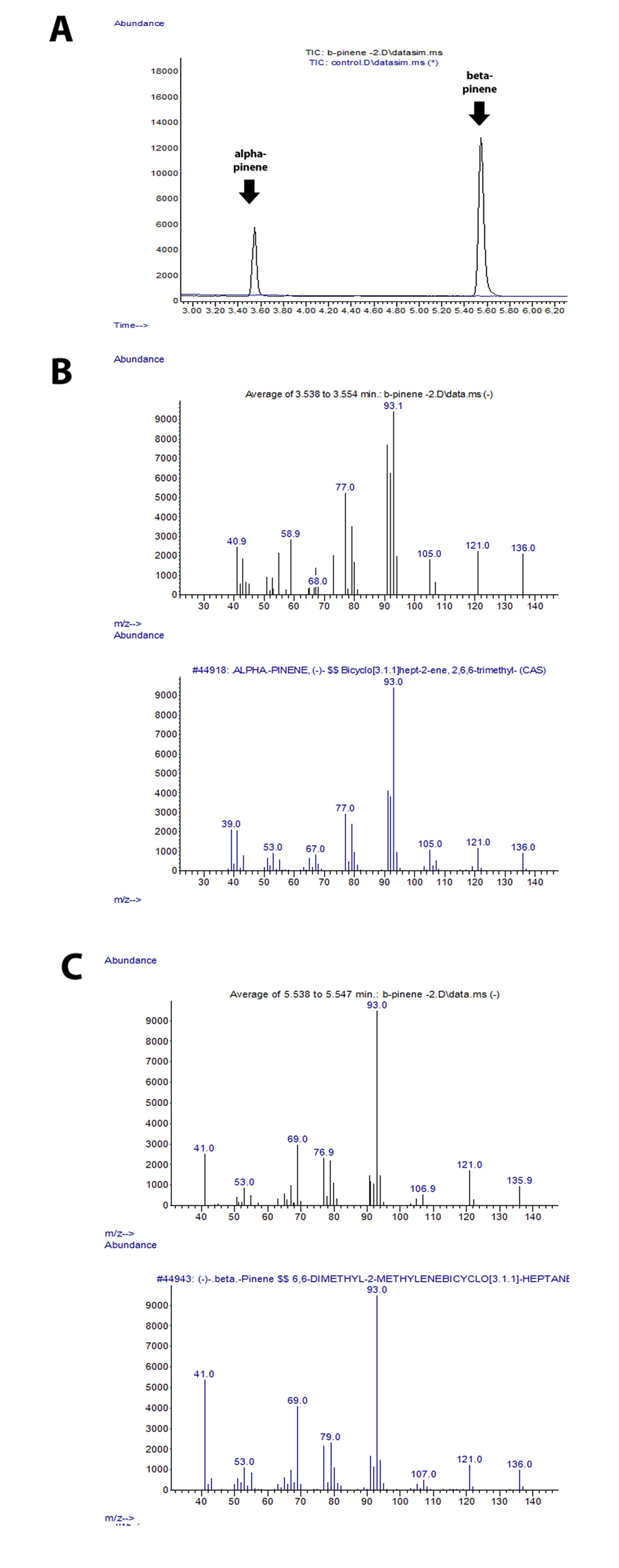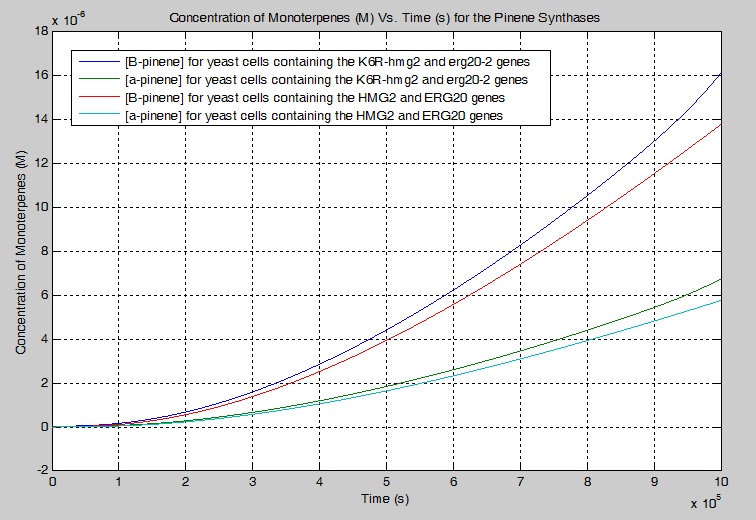Team:British Columbia/Accomplishments
From 2011.igem.org
| Line 35: | Line 35: | ||
<center> | <center> | ||
'''Monoterpene Production''' | '''Monoterpene Production''' | ||
| + | |||
| + | To summarize, the engineered mevalonate pathway should be modified to increase the [K6R-HMG2] and [IDI1] for DMA-PP production for mass producing monoterpenes for manufacturing purposes. The tripling the [K6R-HMG2] increases the [GPP] by 8.7000 times. The tripling the [K6R-HMG2] and [IDI1] for the production of DMA-PP increases the [B-pinene] by 7.3166 times and 1.3052 times respectively. | ||
[[File:Monoterpene Production vs Time in Pinene Synthase.jpg]] | [[File:Monoterpene Production vs Time in Pinene Synthase.jpg]] | ||
Revision as of 02:45, 28 October 2011

Wet Laboratory Achievements
1. In vitro assay production of monoterpene in bacteria
Geranyl Pyrophosphate (GPP) Assay
Alpha-pinene and Beta-pinene synthases were purified using His SpinTrap Ni-affinity columns and were assayed in vitro with GPP. Using gas chromatography-mass spectrometry (GCMS), we confirmed the synthesis of alpha and beta pinene monoterpenes from our enzyme assays.
GC-MS Chromatogram
2. Diterpene production in yeast
3. Mountain Pine Beetle & Yeast Co-culture
To prove that release methods by incubation of Mountain Pine Beetles
3. Blue Stain Fungi & Yeast Co-culture Co-culture
Modeling Achievements
Monoterpene Production
To summarize, the engineered mevalonate pathway should be modified to increase the [K6R-HMG2] and [IDI1] for DMA-PP production for mass producing monoterpenes for manufacturing purposes. The tripling the [K6R-HMG2] increases the [GPP] by 8.7000 times. The tripling the [K6R-HMG2] and [IDI1] for the production of DMA-PP increases the [B-pinene] by 7.3166 times and 1.3052 times respectively.
We simulated the expansion of the MPB population from year 2011 to 2020 using the estimates obtained from the clustering analysis. For cost estimation and prediction of emergence of subpopulations, refer to our Model Methodology above.
 "
"

